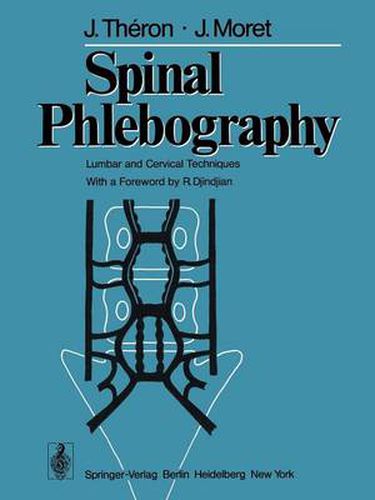Readings Newsletter
Become a Readings Member to make your shopping experience even easier.
Sign in or sign up for free!
You’re not far away from qualifying for FREE standard shipping within Australia
You’ve qualified for FREE standard shipping within Australia
The cart is loading…






This title is printed to order. This book may have been self-published. If so, we cannot guarantee the quality of the content. In the main most books will have gone through the editing process however some may not. We therefore suggest that you be aware of this before ordering this book. If in doubt check either the author or publisher’s details as we are unable to accept any returns unless they are faulty. Please contact us if you have any questions.
Spinal phlebography is an indirect radiologic technique for investigating verte bromedullary pathology. It is a harmless and almost painless technique that does not require the introduction of contrast medium into the subarachnoid spaces. Its interpretation is based on the modifications of the epidural veins which do not themselves have any proven pathology. The longitudinal epidural veins are situated in the anterolateral angles of the spinal canal between the nerve root and the intervertebral disc. They conse quently represent a major anatomic landmark in the investigation of disc pathol ogy because they are compressed by a disc herniation before the corresponding nerve root is reached. The improvement of the techniques of lumbar phlebography by catheterization of the lateral sacral veins and of cervical phlebography by catheterization of the vertebral veins now permits opacification of the epidural venous system along the total length of the lumbar and cervical spine. Spinal phlebography can consequently be used routinely, primarily in disc pathology but now also in other fields of vertebromedullary pathology such as myelopathy, tumors, or stenosis of the spinal canal, where it provides new information as compared to the other techniques of investigation. The techniq ue and results of spinal phlebography in these various conditions are presented in this monograph which is an attempt, with the collaboration of several authors, to summarize current knowledge in this field. Only lumbar and cervical phlebography will be discussed in this monograph.
$9.00 standard shipping within Australia
FREE standard shipping within Australia for orders over $100.00
Express & International shipping calculated at checkout
This title is printed to order. This book may have been self-published. If so, we cannot guarantee the quality of the content. In the main most books will have gone through the editing process however some may not. We therefore suggest that you be aware of this before ordering this book. If in doubt check either the author or publisher’s details as we are unable to accept any returns unless they are faulty. Please contact us if you have any questions.
Spinal phlebography is an indirect radiologic technique for investigating verte bromedullary pathology. It is a harmless and almost painless technique that does not require the introduction of contrast medium into the subarachnoid spaces. Its interpretation is based on the modifications of the epidural veins which do not themselves have any proven pathology. The longitudinal epidural veins are situated in the anterolateral angles of the spinal canal between the nerve root and the intervertebral disc. They conse quently represent a major anatomic landmark in the investigation of disc pathol ogy because they are compressed by a disc herniation before the corresponding nerve root is reached. The improvement of the techniques of lumbar phlebography by catheterization of the lateral sacral veins and of cervical phlebography by catheterization of the vertebral veins now permits opacification of the epidural venous system along the total length of the lumbar and cervical spine. Spinal phlebography can consequently be used routinely, primarily in disc pathology but now also in other fields of vertebromedullary pathology such as myelopathy, tumors, or stenosis of the spinal canal, where it provides new information as compared to the other techniques of investigation. The techniq ue and results of spinal phlebography in these various conditions are presented in this monograph which is an attempt, with the collaboration of several authors, to summarize current knowledge in this field. Only lumbar and cervical phlebography will be discussed in this monograph.